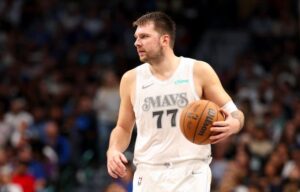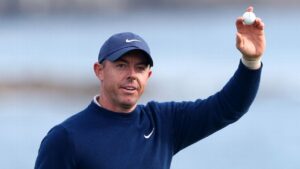
Christian Walker had to wait for an opportunity. Drafted as a first baseman by the Orioles out of the University of South Carolina in 2012, he came up through Baltimore’s system at the same time that Chris Davis was bashing home runs on a regular basis. Then he found himself with a team where the player ensconced at his position was even better: In 2017 and ’18, Walker was buried behind Paul Goldschmidt on the Diamondbacks’ depth chart. When he celebrated his 28th birthday in March 2019, he had all of 61 big league games under his belt.
Opportunity finally came that season — Goldschmidt was traded to the Cardinals over the winter — and Walker didn’t waste it. Displaying the plus power that has remained his calling card, he went deep 29 times and logged a .348 OBP and a .476 slugging percentage. He’s an even better hitter now, heading into the current campaign on the heels of a 2022 season that saw him go deep 36 times with a 122 wRC+.
More than opportunity was behind the slugger’s breakthrough. Six years ago, he began an evolution that has turned him what he is today: a bona fide hitting nerd. Walker discussed that transformation prior to a recent spring training game.
———
David Laurila: You had a breakthrough season in 2019. Was that mostly a matter of opportunity, or was it more about adjustments you’d made?
Christian Walker: “A little bit of both. Some of it was diving into the hitting side of things, the mechanics. I’m a tinkerer at heart, so it’s fun for me to think about new things and try to unlock something. But to be honest, it’s really about being surrounded by a great staff. They know where my head goes when I want to work on something and start asking questions. It’s good to have guys like [hitting coach] Damion Easley around to keep me competitive and less mechanical.
“That said, the whole conversion started in 2015 when I got introduced to a hitting guy back in Pennsylvania. Jon Walton is at Diamond Dreams Baseball Academy, and he’s shown me this whole other world of hitting. We grew up in similar baseball circles — I’m from just outside of Philly — and he really understands the data side of hitting. It’s helpful for me to have somebody to filter the helpful stuff from the getting-lost-in-the-weeds conversations.”
Laurila: Your progression has largely been data-driven.
Walker: “He was using — he is using — data and hard numbers to help come up with the best approach, the best swing, the best plan for for me. But it’s not just mechanical. It’s data-driven in a sense of, ‘How can we learn if what we’re doing is working or not?’ Last year, for example, my average being down had me wanting to reconsider, to think about changing some things. What am I missing? How can I get this average up? But then, when you looked at the advanced analytics, the expected slug, the expected average… the expected everything was through the roof.
“It’s helpful to be able to trust your process under those certain circumstances. So I’m not using data to change my swing; I’m using data to let me know if something needs to be addressed or not.”
Laurila: Basically, data showed that what you needed was to stay the course.
Walker: “Yeah. I mean, I hate looking up and seeing .170 on the scoreboard, but there’s a way to measure that, too. It can be, ‘Hey, you’re just not getting lucky right now,’ which helps you avoid second-guessing yourself. I feel like I was just hitting balls right at guys, or guys were simply making really good plays. At one point last year, I think there were 0.70 points between my expected batting average and my actual batting average. Little things like that let me know that what I was doing was right. It was, ‘OK, if we put this product out for 162, we’ll be in a good place.’
Laurila: Circling back to the work you’ve done with Jon Walton, was some of it structured on body-movement assessments?
Walker: “Yeah. Body studies. Sequencing. K-vests. Blast [captures]. These days we’ve reduced what we’re looking at specifically, we’re pretty comfortable with my habits and my patterns. But for awhile we were trying to get as much data as possible. Data is interesting, because it can tell you something that you don’t feel or see on video.”
Laurila: What adjustments did those early assessments prompt?
Walker: “Initially, we started out with bat path. I had a pretty steep, pushy bat path through the zone, so my forgiveness on contact point was pretty small. That was right around the same time Josh Donaldson and Bobby Tewksbary were kind of the face of this swing-change stuff, the ‘swing up, don’t swing down.’ Not that we were specifically doing that stuff, but the narrative around hitting was sort of charging. It was becoming ‘embrace hitting the ball in the air, let’s figure out how to get on on plane with pitches.’ So it started out as bat path stuff and evolved to things like positioning and ‘where is your weight?’ Getting more balls in the air was a goal.”
Laurila: Have advancements in pitching necessitated further evolution?
Walker: “They have. These guys are so good on the mound that harboring a prayer is almost non-existent. If a guy is throwing a 90-mph sinker, instead of trying to pick one place, I just need my path to be close. I don’t care if I’m late and hit it to right or if I’m early and hit it to left, as long as I’m on plane with that sinker. If I am, I’m going to be in a good spot. That kind of frees me up a little bit.”
Laurila: Do you work at not having a grooved swing?
Walker: “Sometimes. We occasionally do rounds that we call ‘ugly swings.’ They flip the ball anywhere and you’ve got to hit it. It’s about not being such a robot, not being so stuck. If you see something outside the norm, you need to be able to make a good reaction and survive.”
Laurila: Any final thoughts on hitting?
Walker: “I would say that, overall, a lot of the success has come from my backside. Generating my swing with my back leg… I have a big, strong lower half, an aggressive lower half. I want to use it. I want to use my butt. I want to use my legs. For me, it’s back leg, backside, be behind the baseball, feel like I’m under the baseball. I’m always putting myself in a position to hit a ball in the air. If you hit balls on the ground, you’re out. I’m not going to make a living that way.
“I’m not necessarily aiming for homers. It’s more, ‘How can I consistently hit balls hard in the air?’ With my skill set, I don’t have to be perfect, I’ve just got to get close. If I can just put it on the barrel, it will be 105 [mph]. I need to use that to my advantage. So learning what helps and what doesn’t help, what gets in the way, keeps me athletic, and it keeps me hitter-ish. Navigating those waters is where I’m focused.”
Laurila: Actually, there is one more thing we should address: the lack of opportunity you dealt with earlier in your career. How difficult was that?
Walker: “It was a learning experience, big time. But I felt like… from the get-go, I did a good job of understanding the situation. I could have hit .400 with 20 homers in the [International League] and I still wasn’t going to play first base over Chris Davis in Baltimore. When I came here, I wasn’t going to beat out Goldie at first base. That’s just the way it was. It was no discredit to me, it’s just that those guys had earned their jobs.
“I spent a lot of time in the headspace of ‘just keep working and eventually you’re going to get your shot, and when you do, you’ve got to make it count.’ I was knocking on the door, knocking on the door, scratching and clawing, and then, all of a sudden, Goldie got traded and there were some at-bats on the table.”
Laurila: Looking back objectively, were you ready a few years earlier, or did you still need more development?
Walker; “I don’t think I would have been ready. I think I could have survived, but as far as being a dominant, aggressive, dangerous hitter in a lineup every day… no. I don’t think I was ready.”
Laurila: When were you ready?
Walker: “I’d say 2017 is when things changed for me. I was two years into some swing-change stuff, and I felt different at the plate. Things started clicking. That made me buy into the hitting-nerd stuff, because I had confirmation. It was, ‘This can change my career.’”
Laurila: You’re a hitting nerd, aren’t you?
Walker: “Yeah. Big time. It’s evolved over the years, for sure. But I love it, man. There are so many angles. It’s fun.”
——
Earlier “Talks Hitting” interviews can found through these links: Jo Adell, Jeff Albert, Greg Allen, Nolan Arenado, Aaron Bates, Alex Bregman, Bo Bichette, Cavan Biggio, JJ Bleday, Bobby Bradley, Jay Bruce, Matt Chapman, Michael Chavis, Gavin Cross, Jacob Cruz, Nelson Cruz, Paul DeJong, Josh Donaldson, Brendan Donovan, Donnie Ecker, Rick Eckstein, Drew Ferguson, Justin Foscue, Michael Fransoso, Ryan Fuller, Joey Gallo, Devlin Granberg, Andy Haines, Mitch Haniger, Robert Hassell III, Nico Hoerner, Rhys Hoskins, Eric Hosmer, Tim Hyers, Josh Jung, Jimmy Kerr, Heston Kjerstad, Steven Kwan, Trevor Larnach, Doug Latta, Evan Longoria, Michael Lorenzen, Gavin Lux, Dave Magadan, Trey Mancini, Edgar Martinez, Don Mattingly, Hunter Mense, Owen Miller, Ryan Mountcastle, Cedric Mullins, Daniel Murphy, Vinnie Pasquantino, Brent Rooker, Drew Saylor, Trevor Story, Fernando Tatis Jr., Mark Trumbo, Justin Turner, Trea Turner, Josh VanMeter, Robert Van Scoyoc, Chris Valaika, Zac Veen, Mark Vientos, Matt Vierling, Luke Voit, Anthony Volpe, Jared Walsh, Jordan Westburg, Jesse Winker, Nick Yorke, Kevin Youkilis







